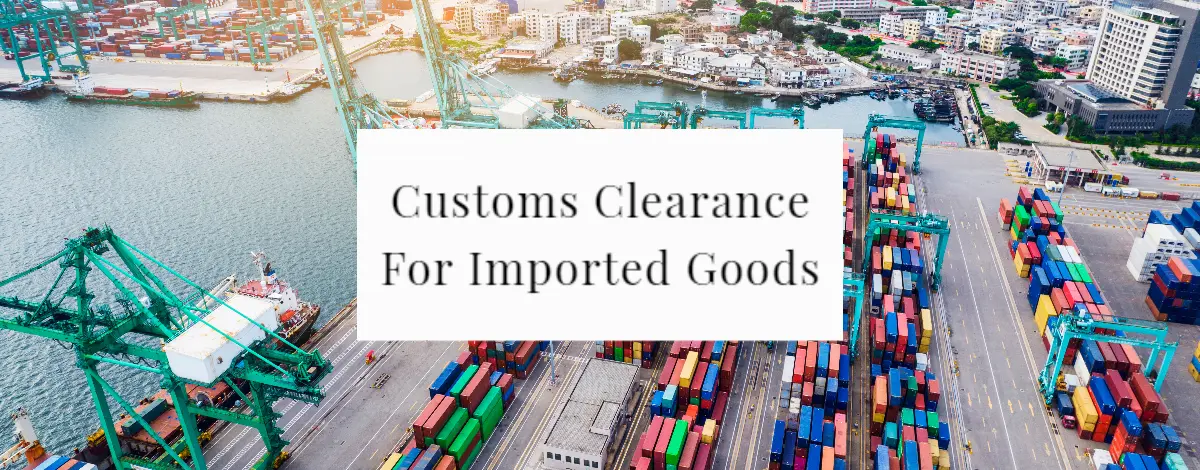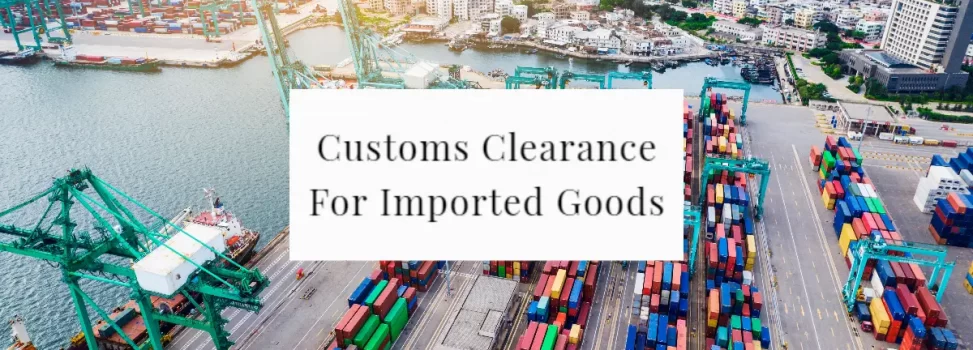According to the Customs Act, all commodities entering India must go through the customs system for appropriate inspection, analysis, scrutiny, and approval. This procedure aids customs authorities in charging the correct tax and inspecting the products for unlawful imports. It’s also worth noting that no imports are getting permission in India unless the importer has obtained an IEC number from the DFGT.
If you are importing the products for individual usage, there is no requirement for an IEC number. Importing items to another country is a difficult undertaking. Things necessitate a lot more paperwork than just placing an order and expecting it to be delivered to your home. You may create things simpler for yourself by preparing ahead and enlisting the assistance of specialists. International trade can be beneficial, but it takes time and money. Here are some helpful hints for clearing customs on imported items.
In India, The Duration It Takes For Items To Pass Customs:
Imported items can take anywhere from a few hours to several days to complete customs, based on the circumstances. It normally takes 10-14 days for your transaction to get clearance after your dealer has entered it. When the customs department gets your registration, the customs officer must evaluate it and decide whether to accept or deny the package. Determined by the accessibility of customs personnel at the port, this operation can take a week or months.
There is a possibility of inspecting a package. When examining the imported items, they can be stored in storage or taken to a customs officer’s workplace for scrutiny. Across the day, customs inspectors examine various cargoes and create statements depending on their findings. During peak traffic periods, this approach can take up to a day or two.
Additional Read: What Does Customs Duty Mean In India, And its Types?
Refusal Of Imported Goods For The Following Factors:
The main factor for the temporary denial is that the information is incorrect and does not match the documentation for the cargo. Customs officials will notify the intermediaries or dealers in this situation, and they will set the record straight. Default state of cargo, underpricing your imported items, and importing things that are not getting permission in the country for a variety of reasons, including protection, are all factors for permanent delivery refusal.
When any of these reasons for refusal apply, a shipper must have the items returned to the source. Afterward, customs officers will discard all the products.
Also Read: 10 Best Courier Services in India – Get Quality Courier Services
Import Shipments: GST & IGST:
In India, GST certification is a key component of the customs clearance process. The Basic Customs Duty is subject to a variety of charges and fees under the new GST regulations.
Countervailing Duty (CVD) and Special Additional Duty of Customs (SAD) are also imposed on merchants, accompanied by the Integrated Goods and Services Tax (IGST) (IGST). All purchased goods will be subject to the Central Board of Excise and Customs, the IGST, and the GST Compensation CESS.
Import Clearance Requirements:
- All shippers in the country must submit a bill of entry to government requirements.
- Before actually submitting a bill of entry, importers must receive an Importer-Export Code (IEC) number from the Director-General of Foreign Trade.
- The importer has the option of submitting their paperwork in an online version that includes all pertinent details.
- The service center employee creates a bill of entry number after verifying the facts.
- Before actually customs clearance, importers are now obliged to approve the legal version.
- Importers’ bills of entry will be transmitted to the customs house for assessment of duty payment and other matters.
Also Read: In-depth Information about Parcel Insurance for Customers
Manually Conduct Evaluation:
The evaluating proposal will establish the duty payable on imported products, as well as check for any import bans or limitations. Duty assessment entails classifying imported products according to the Customs Tariff Act and determining duty responsibility.
In addition, where the items are ascertainable, this evaluation entails the correct estimation of value. To complete this procedure, the investigating officer will need invoices and other statements, as well as the bill of entry, to substantiate the stated value. The investigating officer uses the current values and other assessment data accessible in the customs house to determine value by the provisions of the Customs Act.
When the representation of the commodities contained in the paperwork is not adequate, the evaluating officer may request a thorough assessment of the characteristics of the products.
The evaluating officer evaluates the bill of entry after receiving the assessment record, specifying the assessment, ultimate categorization, and various duties. As a result, the bill of entry is sent to the Assistant Commissioner for approval, and the duty amount is calculated based on specific value restrictions.
After the duty has been assessed and calculated, the importer must pay the duty to the appropriate institutions. Because the items have recently been inspected to finalize the assessment, no additional inspection by the evaluating crew is necessary at delivery, and the commodities can be given after confirming applicable orders and paying any outstanding debts.
Also Read: What Are The Details You Should Know For Making A Successful Move And Settling In A New House?
Significant Concepts In The Customs Clearance Process:
What Is The Purpose Of A Bill Of Entry?
A Bill of Entry, also known as a Shipment Bill, is a document that specifies the worth of items to be imported or exported and is submitted to a customs office. To make bank transactions, the importer must present a bill of entry to the customs office.
There is no requirement of a formal Bill of Entry when products are getting approval through the EDI system because it is processed in the computer system. However, the importer must complete a freight statement structure for the admission to be processed for customs clearance. To file a bill of entry, you’ll need the supporting information:
- An invoice that has been signed
- List of items to bring
- Delivery Order or Bill of Lading
- The number on the Airway Bill
- Importers/ CHA’s declaration on the GATT declaration form
- Where there is a requirement, a license is important.
- Where possible, use a letter of credit or a bank draught.
- Document of insurance
- If necessary, obtain an import license and an industrial license.
- In the event of chemicals, a test report is essential.
- If a preferred rating of duty is sought, a certificate of origin is important.
- There is no statement from the Commission.
- EDI assessment:
After filing the bill of entry, the EDI assessment is the following stage. All computations are ready online in this phase to offer enough data for the import duty assessment.
Also Read: What Should You Do On The Day Of Your Move?
Modifications To The Bill Of Entry:
Once the customs officer has received all the requisite paperwork, he or she will examine them for any necessary changes. This is ready with the approval of the Indian Deputy/ Assistant Commissioner.
Facility With A Green Channel:
The green channel clearance facility has been granted to a few significant importers. It signifies that things are getting clearance without being examined regularly. On the date of submitting the bill of entry, they must make a statement on the disclosure form. The appraisal will be conducted as usual, with the exception that the goods will not be physically examined.
Payment Of Duty:
This is a crucial procedure for all importers and exporters to take. They must spend the duty using TR-6 challans at a variety of bank branches.
Prior Entry For The Shipping Bill:
The shipment bill can be filed before the items arrive in India. It is possible if the items arrive 30 days before the date on which the shipping bill is presented.
Also Read: What You Need To Know Before Moving Into Your New House
Important Schemes:
Importing commodities under specific schemes such as DEEC and EOU, for example, necessitates the execution of bonds with customs officials. If the bond fails, the importer is responsible for paying the applicable duty on the items. The bond amount would be equal to the amount of duty that could be levied on imported products. Along with the bond, a bank guarantee is necessary. However, the amount of the bank guarantee is determined by the importer’s status, such as Super Star Trading House, etc.
Bill Of Entrance For Storage:
Importers must spend this bill in the same way as a regular bill of entering for the practice of storing imported goods.
Delivery Of Products:
Once the entire bill of entry process has been completed in a legalized manner, it is simple to distribute imported goods.
Customs clearance is a vital duty that every importer and exporter in India must complete. This process must take place between the countries first. Importers and exporters of commodities must ensure that they have all the relevant documentation that will get assessment throughout the bill of the entry process.
Additional Read: List of Top 10 Logistics Companies In India For Delivering E-Commerce Products
Final words:
The government increased the volume of imports in the country by implementing commercial changes and openness, so you should know more details regarding the customs clearance on imported goods.



